Abstract
1 The intravenous administration, to anaesthetized rats, of meptazinol (1 and 2 mg kg-1), a partial agonist at opiate receptors, greatly reduced the incidence of ventricular extrasystoles that resulted from acute coronary artery occlusion. The incidence of ventricular fibrillation (VF) was reduced from 50% (in the controls) to 10% and the mortality from 30% to zero. 2 In similar doses, pretreatment with meptazinol also reduced ventricular arrhythmias, including fibrillation, in conscious rats subjected to coronary artery occlusion. In this model, survival at 16 h was increased from 27% in the controls to 50% and 83% respectively in rats pretreated with 1 and 2 mg kg-1 of the drug. 3 In antiarrhythmic doses, meptazinol had little effect on either heart rate or systemic arterial blood pressure. 4 Intracellular action potential recordings from papillary muscle removed from rats given meptazinol (2 mg kg-1) 15 min previously showed an increase in APD50 and APD90 of more than 40%. There was no effect on dV/dtmax. When superfused with meptazinol in vitro normal rat papillary muscle stimulated at 1 or 3 Hz showed an increase in APD90 and a decrease in dV/dtmax. 5 The antiarrhythmic effect of meptazinol in these models can probably be explained by direct actions on the cardiac muscle action potential (increase in APD) although effects on opiate receptors cannot be ruled out. It is suggested that meptazinol might be useful in relieving pain, and in reducing the severity of arrhythmias in the early stages of acute myocardial infarction.
Full text
PDF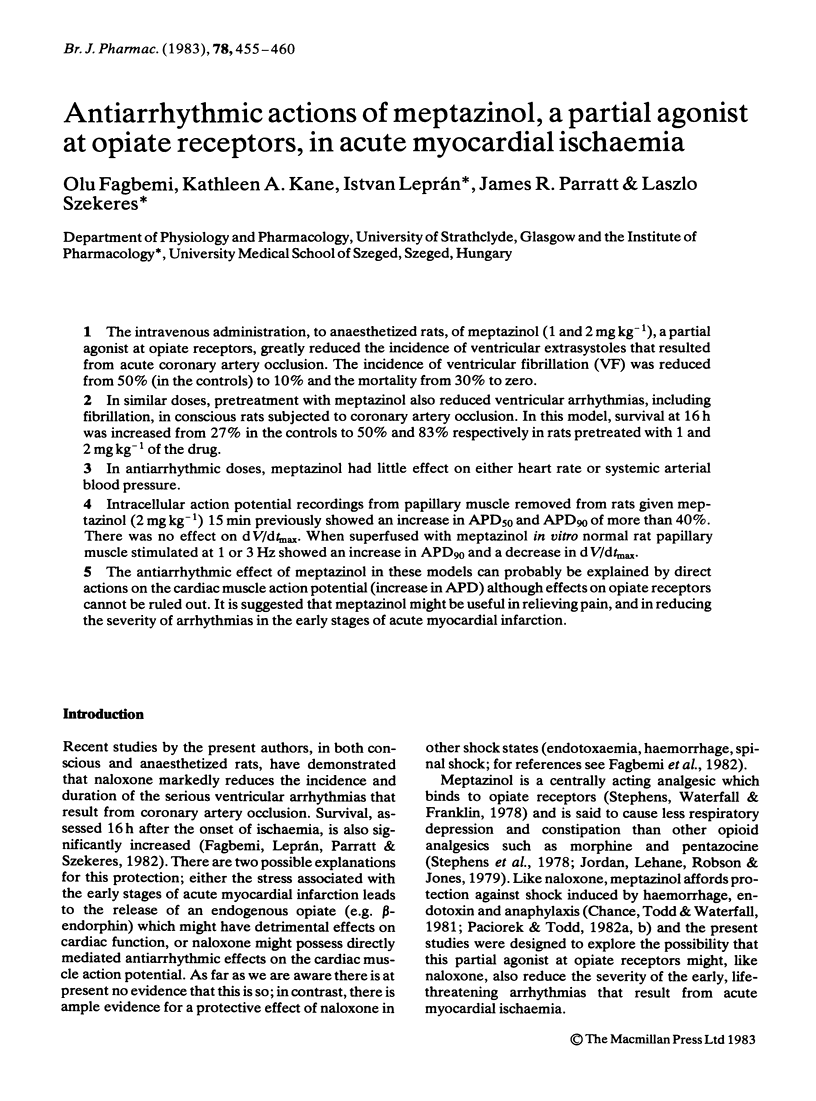
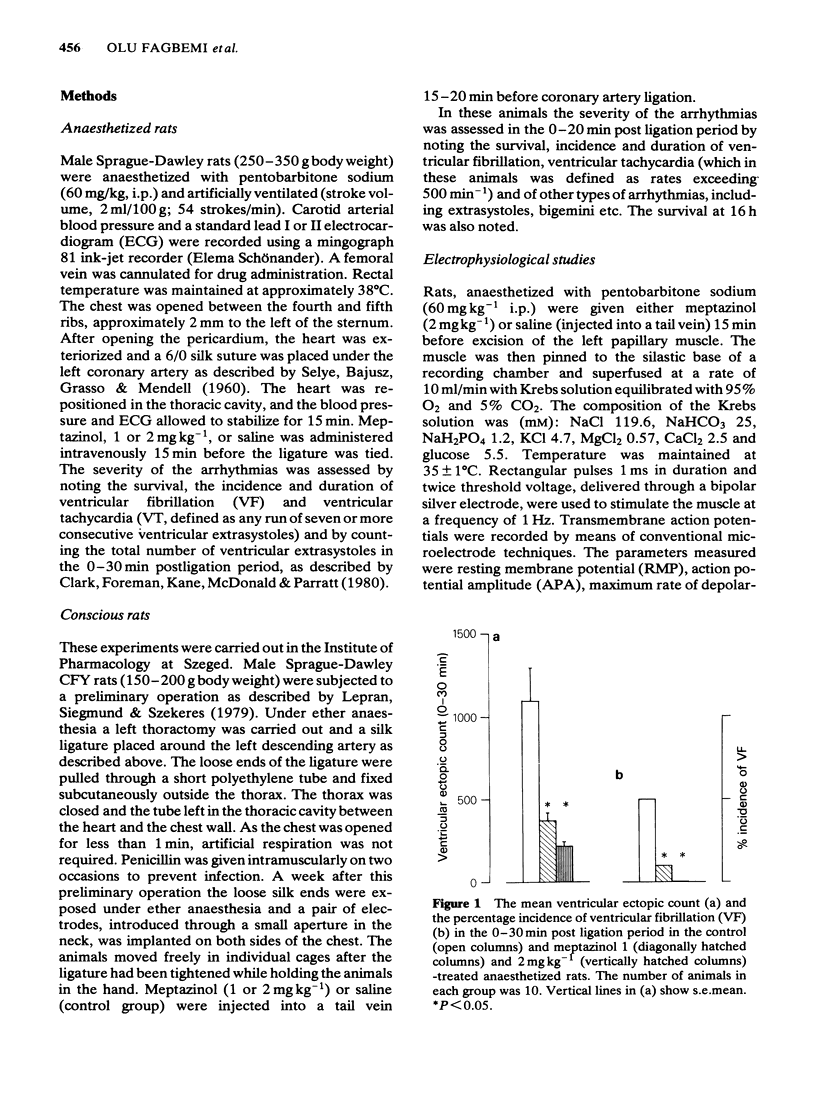
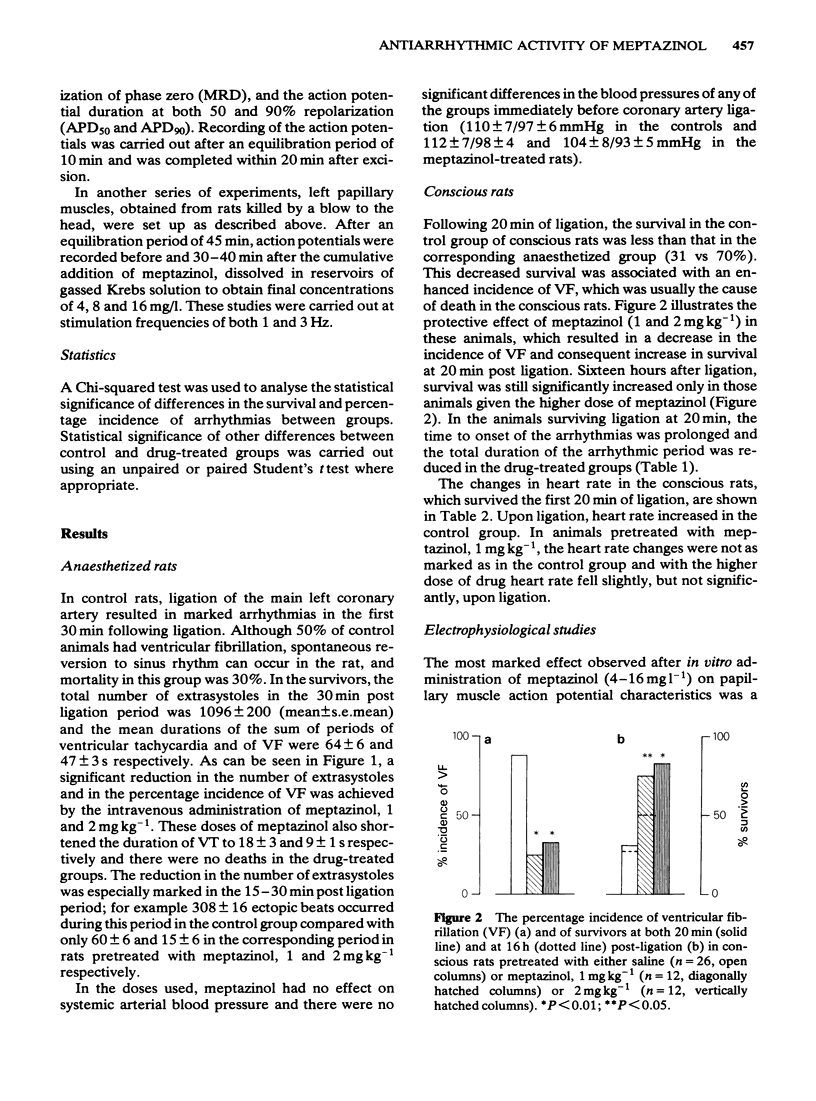
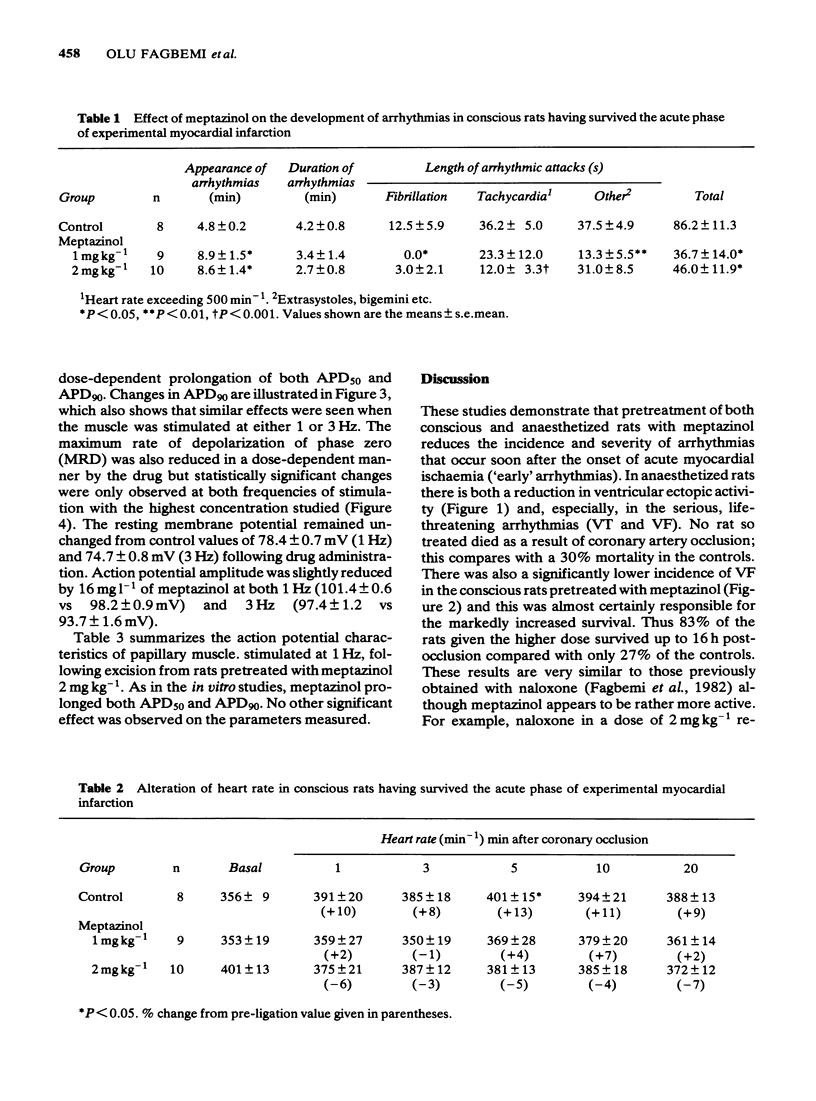
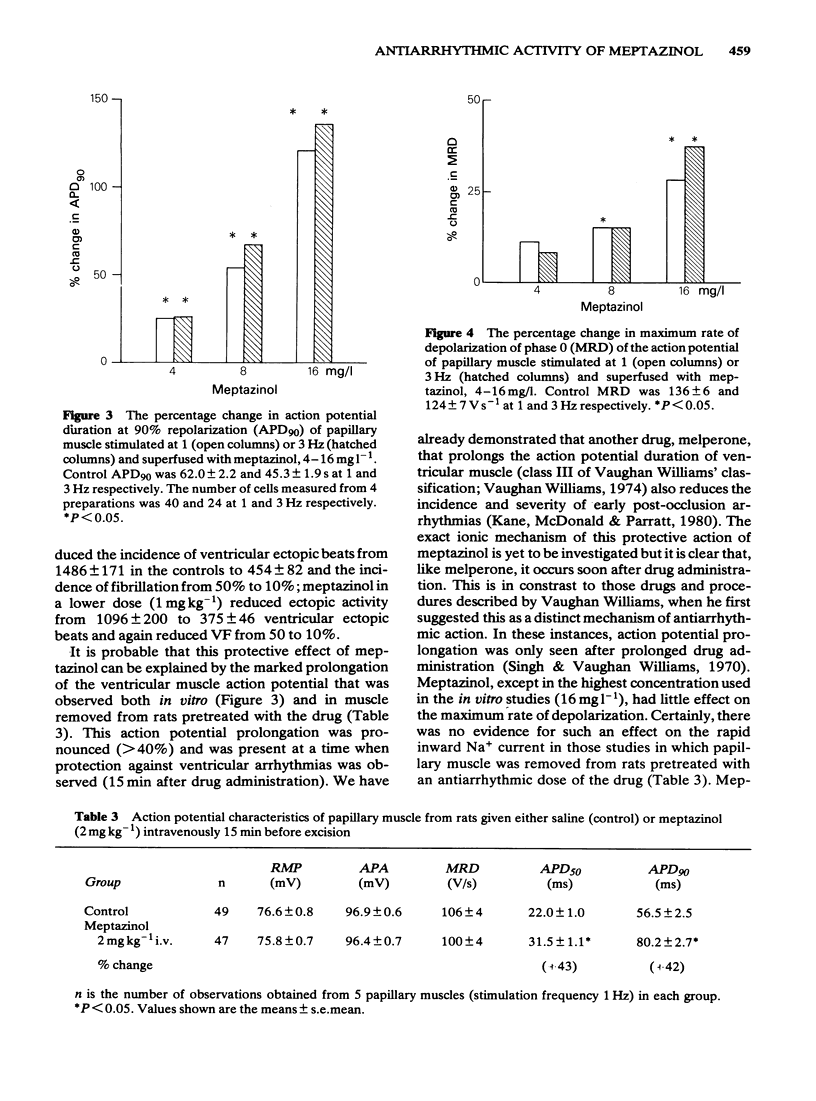
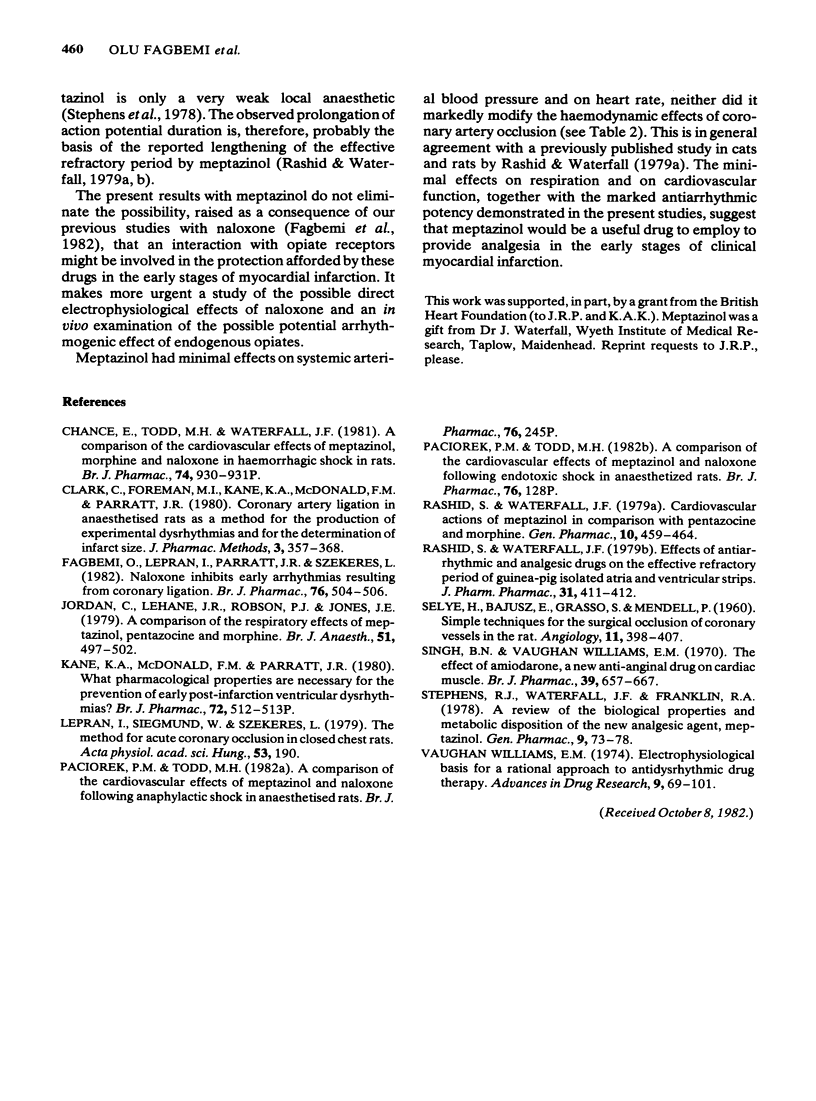
Selected References
These references are in PubMed. This may not be the complete list of references from this article.
- Clark C., Foreman M. I., Kane K. A., McDonald F. M., Parratt J. R. Coronary artery ligation in anesthetized rats as a method for the production of experimental dysrhythmias and for the determination of infarct size. J Pharmacol Methods. 1980 Jun;3(4):357–368. doi: 10.1016/0160-5402(80)90077-7. [DOI] [PubMed] [Google Scholar]
- Evans D. F., Foster G. E., Hardcastle J. D., Jonhson F., Wright J. W. The action of porcine glucagon on the motility of the canine duodenum and jejunum. Br J Pharmacol. 1982 Jun;76(2):245–252. doi: 10.1111/j.1476-5381.1982.tb09213.x. [DOI] [PMC free article] [PubMed] [Google Scholar]
- Fagbemi O., Leprán I., Parratt J. R., Szekeres L. Naloxone inhibits early arrhythmias resulting from acute coronary ligation. Br J Pharmacol. 1982 Aug;76(4):504–506. doi: 10.1111/j.1476-5381.1982.tb09246.x. [DOI] [PMC free article] [PubMed] [Google Scholar]
- Jordan C., Lehane J. R., Robson P. J., Jones J. G. A comparison of the respiratory effects of meptazinol, pentazocine and morphine. Br J Anaesth. 1979 Jun;51(6):497–502. doi: 10.1093/bja/51.6.497. [DOI] [PubMed] [Google Scholar]
- Rashid S., Waterfall J. F. Cardiovascular actions of meptazinol in comparison with pentazocine and morphine. Gen Pharmacol. 1979;10(6):459–464. doi: 10.1016/0306-3623(79)90009-0. [DOI] [PubMed] [Google Scholar]
- Rashid S., Waterfall J. F. Effect of antiarrhythmic and analgesic drugs on the effective refractory period of guinea-pig isolated atria and ventricular strips. J Pharm Pharmacol. 1979 Jun;31(6):411–412. doi: 10.1111/j.2042-7158.1979.tb13537.x. [DOI] [PubMed] [Google Scholar]
- SELYE H., BAJUSZ E., GRASSO S., MENDELL P. Simple techniques for the surgical occlusion of coronary vessels in the rat. Angiology. 1960 Oct;11:398–407. doi: 10.1177/000331976001100505. [DOI] [PubMed] [Google Scholar]
- Singh B. N., Vaughan Williams E. M. The effect of amiodarone, a new anti-anginal drug, on cardiac muscle. Br J Pharmacol. 1970 Aug;39(4):657–667. doi: 10.1111/j.1476-5381.1970.tb09891.x. [DOI] [PMC free article] [PubMed] [Google Scholar]
- Stephens R. J., Waterfall J. F., Franklin R. A. A review of the biological properties and metabolic disposition of the new analgesic agent, meptazinol. Gen Pharmacol. 1978;9(2):73–78. doi: 10.1016/0306-3623(78)90002-2. [DOI] [PubMed] [Google Scholar]
- Williams E. M. Electrophysiological basis for a rational approach to antidysrhythmic drug therapy. Adv Drug Res. 1974;9:69–101. [PubMed] [Google Scholar]


